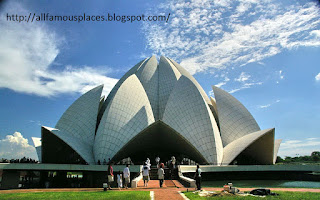Banff National Park is Canada's most seasoned national park, built up in 1885 in the Rocky Mountains. The recreation center, found 68–112 mi. west of Calgary in the area of Alberta, includes 2,564 sq mi of bumpy territory, with various icy masses and ice fields, thick coniferous woods, and snow capped scenes. The Icefields Parkway reaches out from Lake Louise, interfacing with Jasper National Park in the north. Common backwoods and Yoho National Park are neighbors toward the west, while Kootenay National Park is situated toward the south and Kananaskis Country toward the southeast. The principle business focus of the recreation center is the town of Banff, in the Bow River valley. The Canadian Pacific Railway was instrumental in Banff's initial years, assembling the Banff Springs Hotel and Chateau Lake Louise, and drawing in sightseers through broad publicizing. In the mid twentieth century, streets were inherent Banff, on occasion by war internees from World War I, and through Great Depression-time open works ventures. Since the 1960s, park facilities have been open all year, with yearly tourism visits to Banff expanding to more than 5 million in the 1990s. Millions more go through the recreation center on the Trans-Canada Highway. As Banff is one of the world's most gone to national parks,[5] the wellbeing of its biological system has been debilitated. In the mid-1990s, Parks Canada reacted by starting a two-year study, which brought about administration proposals, and new arrangements that mean to protect environmental honesty.
All through its history, Banff National Park has been formed by pressure in the middle of protection and advancement intrigues. The recreation center was built up in 1885, because of clashing cases over who found hot springs there, and who had the privilege to add to the hot springs for business intrigues. Rather, Prime Minister John A. Macdonald put aside the hot springs as a little, secured hold, which was later extended to incorporate Lake Louise and different ranges stretching out north to the Columbia Icefield.Archaeological proof found at Vermilion Lakes radiocarbon dates the first human action in Banff to 10,300 B.P. Before European contact, aboriginals, including the Stoneys, Kootenay, Tsuu T'ina, Kainai, Peigans, and Siksika, were regular in the district where they chased buffalo and other amusement. With the confirmation of British Columbia to Canada on 20 July 1871, Canada consented to fabricate a cross-country railroad. Development of the railroad started in 1875, with Kicking Horse Pass picked, over the all the more northerly Yellowhead Pass, as the course through the Canadian Rockies. After ten years, the last spike was driven in Craigellachie, British Columbia.
With clashing cases over revelation of hot springs in Banff, Prime Minister John A. Macdonald chose to set aside a little hold of 10 sq mi around the hot springs at Cave and Basin as an open park known as the Banff Hot Springs Reserve in 1885. Under the Rocky Mountains Park Act, sanctioned on 23 June 1887, the recreation center was extended to 260 sq mi and named Rocky Mountains Park. This was Canada's first national park, and the third settled in America, after Yellowstone and Mackinac National Parks. The Canadian Pacific Railway constructed the Banff Springs Hotel and Chateau Lake Louise to pull in voyagers and build the quantity of rail travelers. The Stoney Indians were expelled from the Banff National Park amid 1890-1920. The recreation center was intended to speak to sportsmen, and vacationers. Authorities faulted the exhaustion of untamed life in the recreation center on the Indians' dependence on subsistence chasing. The exclusionary arrangement met the objectives of games chasing, tourism, and diversion preservation, and also of those endeavoring to "acculturate" the Indians.In 1887, neighborhood native tribes marked Treaty 7, which gave Canada rights to investigate the area for assets. Toward the start of the twentieth century, coal was mined close Lake Minnewanka in Banff. For a brief period, a mine worked at Anthracite, yet was closed down in 1904. The Bankhead mine, at Cascade Mountain, was worked by the Canadian Pacific Railway from 1903 to 1922. In 1926, the town was destroyed, with numerous structures moved to the town of Banff and somewhere else.
Winter tourism in Banff started in February 1917, with the first Banff Winter Carnival. It was advertised to a provincial working class group of onlookers, and turned into the centerpiece of neighborhood sponsors expecting to pull in guests, which in wintertime were a low need for the Canadian Pacific Railway (CPR). The fair included a substantial ice castle, which in 1917 was fabricated by internees. Jamboree occasions included crosscountry skiing, ski hopping, twisting, snowshoe, and skijoring. In the 1930s, the first downhill ski resort, Sunshine Village, was created by the Brewsters. Mount Norquay ski zone was likewise created amid the 1930s, with the first seat lift introduced there in 1948.























